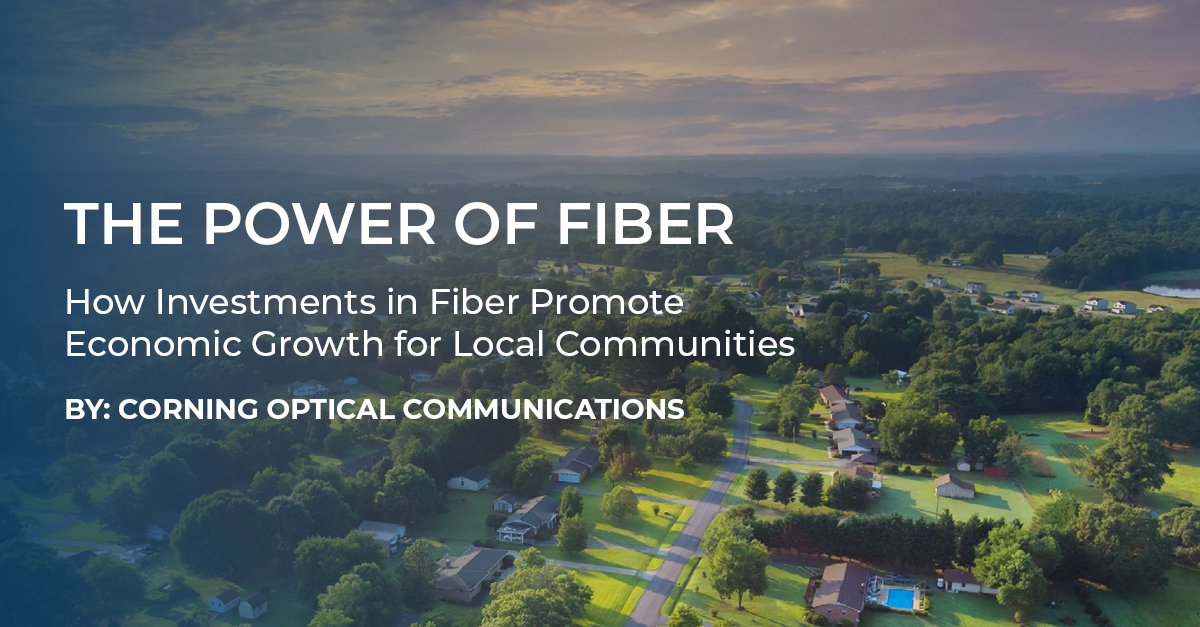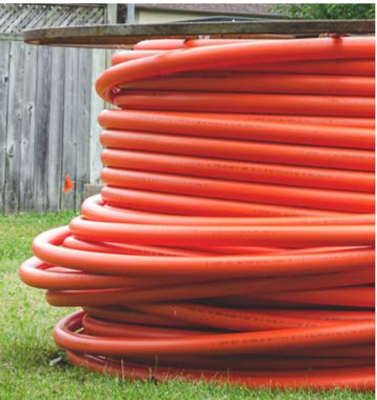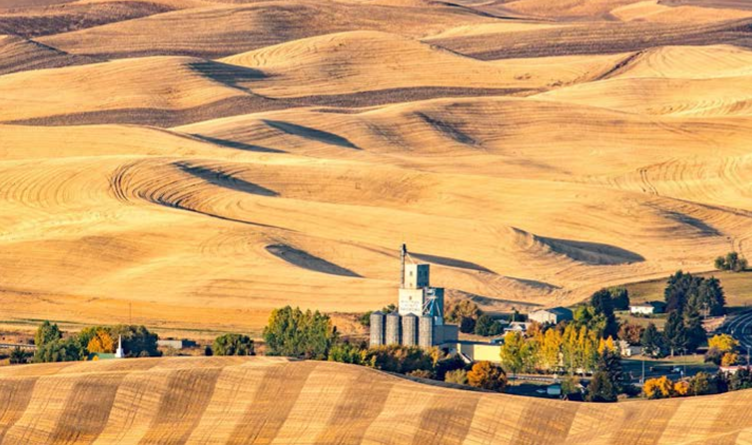
A Historical Investment in Fiber
The power of fiber to help local communities grow is immense. But let’s start with why now is the right time to get into fiber in the first place.
There has never been a better opportunity for utilities, telecommunications providers, and governmental institutions to make an investment in new fiber networks. Why? We live in an era of unprecedented investment in expanding and enhancing broadband networks across the United States. Here’s a snapshot of the recent funding available through federal and state governments:
- The Infrastructure Investment and Jobs Act of 2021 (IIJA, also known as the Bipartisan Infrastructure Law) set apart more than $65 billion for broadband infrastructure deployment. Three of its programs take specific aim at the creation and enhancement of broadband networks:
- The Broadband Equity, Access, and Deployment (BEAD) Program offers a minimum of $100 million to each state and $25 million to each U.S. territory for the creation of broadband networks. The BEAD Program is expected to prioritize fiber projects in underserved areas.
- The Enabling Middle Mile Broadband Infrastructure Program is a nearly $1 billion fund allowing governments, nonprofits, and industries like telecommunications companies and utility cooperatives to receive grant funding to build and expand middle mile networks.
- The Tribal Broadband Connectivity Program sets aside almost $1 billion for Tribal governments to deploy broadband and enhance the digital lives of Tribal members through broadband affordability, telehealth, distance learning, and other programs.
 The American Rescue Plan Act of 2021 allocated $350 billion to state, local, and Tribal governments. Billions of American Rescue Plan dollars have already been awarded toward broadband infrastructure projects. In January 2022, the Treasury Department expanded the funding rules to allow for more broadband projects.
The American Rescue Plan Act of 2021 allocated $350 billion to state, local, and Tribal governments. Billions of American Rescue Plan dollars have already been awarded toward broadband infrastructure projects. In January 2022, the Treasury Department expanded the funding rules to allow for more broadband projects.- The list goes on with older programs, including:
- The Consolidated Appropriations Act (passed in 2020): $5 billion for broadband-related issues
- The Rural Digital Opportunity Fund (launched in 2020): $20 billion for broadband in rural areas
- The USDA’s Rural Development Broadband ReConnect Program (launched in 2018): More than $1.1 billion for broadband deployment The funding is on the table, waiting to be claimed. There may never be a better time to begin, expand, or improve your fiber network.
What Fiber Can Do for Communities
 Why fiber, and what will it do for your community? Fiber is uniquely positioned to power economic development and here’s why:
Why fiber, and what will it do for your community? Fiber is uniquely positioned to power economic development and here’s why:
- The speed and low latency offered by fiber networks is unmatched. Fiber offers a completely transparent connection with symmetrical speeds possible far beyond what most homes and businesses need.
- Converged access networks mean that a single fiber network can power residential, business, enterprise, and wholesale applications—signals can be aggregated into a single strand of fiber and disaggregated to provide fiber to the home, the business, the wireless tower, and to whatever the future demands.
- Fiber networks offer possibilities for redundancy and uptime monitoring that make fiber not only the fastest but also the most reliable form of broadband.
Communities in which fiber networks are built almost instantly have access to innumerable opportunities that a fiber connection provides. For example:
- Homes with a fiber connection empower their residents to telecommute with the reassurance of a strong, dependable connection and offer opportunities for smart home services and online learning.
- Hospitals and doctor’s offices can offer reliable telehealth, including the ability to consult with out-of-area health professionals who may have specialties or expertise previously unavailable to the community.
- Farms powered by fiber can use video technology to monitor fields and sensors that help manage smart watering systems.
- Local schools can offer students access to tools that weaker, slower connections can’t provide. Fiber becomes an investment in the economic success and growth of a community as educational opportunities improve.
These examples merely scratch the surface. But what can research and existing fiber deployments tell us about the true power of fiber? Read on.
Real-World Examples and Statistics
When it comes to the power of fiber to promote a community’s economy, the data is clear and offers proof behind the theory. Here are just a few remarkable real-world examples:
 Fiber increases local business revenue. Earlier this year, an RVA Market Research & Consulting study concluded that “over $78 million per year of additional primary revenue from home-based businesses could be gained from an FTTH community of 100,000 households.” This study also showed that, for home-based businesses on a fiber connection, income from outside the community was 73% higher than it was for home based businesses on a different kind of connection.
Fiber increases local business revenue. Earlier this year, an RVA Market Research & Consulting study concluded that “over $78 million per year of additional primary revenue from home-based businesses could be gained from an FTTH community of 100,000 households.” This study also showed that, for home-based businesses on a fiber connection, income from outside the community was 73% higher than it was for home based businesses on a different kind of connection.- Fiber increases employment rates. A University of Missouri study on the impact of wired broadband during the COVID-19 pandemic showed links between wired broadband availability and adoption: they correlated a 1% increase in availability to a .37% increase in rural employment rates, and a 1% increase in adoption to a .87% increase in rural employment rates. Consulting firm Deloitte created economic models that reinforce this link between broadband availability and employment. Their 2021 report concluded that, had there been a 10% increase in broadband penetration in 2016, 806,000 additional jobs would have been created by 2019 (an average annual increase of 269,000 jobs).
- Fiber increases local residents’ incomes. After the small city of Westfield, Massachusetts deployed their fiber network, a Futuriom study concluded that the city of just over 40,000 residents saw over $88 million annually in job-related benefits.
- Fiber attracts companies to communities. Todd Way of Douglas Fast Net—which deployed fiber in rural Oregon— says of the power of fiber, “Fiber broadband… [is] playing a key role in helping keep some of our largest employers in the area and attract new businesses and industries to our market.” Additionally, pole-top cameras were installed as Douglas Fast Net constructed the fiber network, which has allowed wildfire teams to track and locate fires and work to fight them.
As more Americans have access to fiber networks, statistics and stories like these will become the norm.
Conclusion
Fiber broadband is a driver of economic growth for communities small and large, urban and rural. The potential growth afforded by fiber is good news for every community in the country, and there has never been a better time to lead the way toward—and find the funding for—fiber broadband deployment.
This article was kindly contributed by Corning Optical Communications
